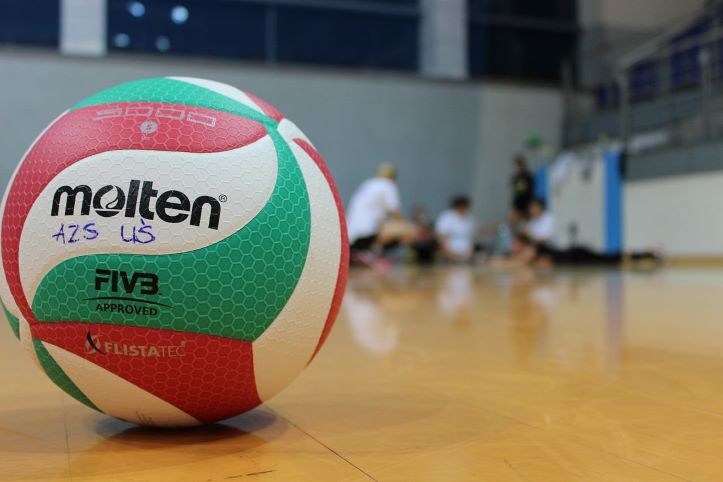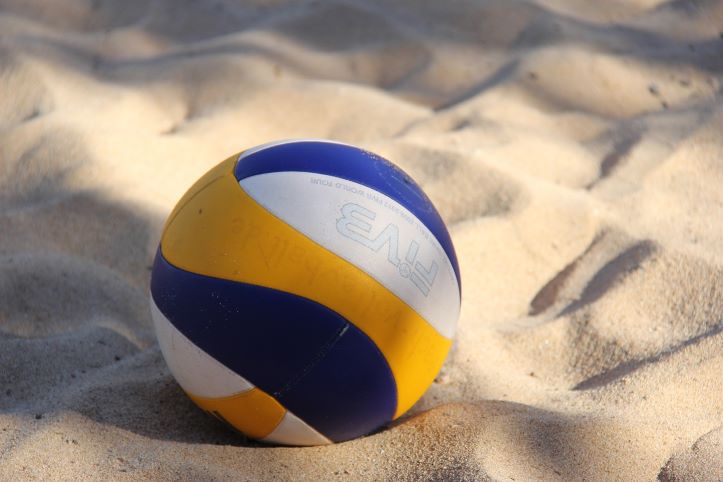Volleyball, a game of agility, teamwork, and spikes. It has won the hearts of sports enthusiasts worldwide. Players focus on their serves and winning plays. But volleyball is sometimes overlooked as the game’s most vital aspect. We know how exhilarating it is to serve or block properly and preserve a game. But how often do we think about caring for our faithful circular friend?
Cleanliness is essential to playing volleyball safely and fairly. This simple act affects more than the court. Knowing how crucial a clean volleyball is keeps people safe and the ball lasts longer. This volleyball care guide covers the essentials. Tips and tricks will help you play well. Learn about “how to clean a volleyball.”

Understanding The Types of Volleyball
Volleyball may seem like a simple game with a singular ball. But the world of volleyball is surprisingly diverse. Understand various types and classifications to properly care for your trusty companion.
Different Types of Volleyball
Volleyballs come in various forms. Each designed for specific purposes:
# Laminated Volleyball: This is a modern marvel, made from innovative materials that enhance its performance and durability. Laminated volleyballs can be further categorized into two subtypes:
- New Material Type: These volleyballs are crafted from advanced synthetic materials. They are designed to withstand the rigors of competitive play.
- Synthetic Leather / Natural Leather Type: Volleyballs made from synthetic leather or real leather. They provide a distinct feel and touch on the court.
# Stitched Volleyball: These volleyballs are characterized by their traditional stitching. They can be further divided into:
- Hand-Stitched: Crafted with meticulous handwork. These volleyballs are known for their precision and quality.
- Machine-Stitched: Advanced machinery gives these volleyballs constant performance and longevity.
# Quality Rubber Volleyball (Others): Some volleyballs are made from high-quality rubber. They are ideal for recreational play and practice.
Classification of the Volleyball
Selecting the correct ball for your game requires knowledge of ball classification. Volleyballs are categorized based on several criteria:
A. Size and Circumference
Official Size: Volleyballs used in official matches, like those regulated by the Fédération Internationale de Volleyball (FIVB), have specific size requirements. They typically have a circumference of about 25.6 to 26.4 inches (65 to 67 centimeters).
Youth and Junior Sizes: Youth and junior volleyballs are smaller to fit their hands and skills. These balls are easier to handle for young athletes.
B. Weight
Standard Weight: Official volleyballs have a standardized weight of approximately 9.2 to 9.9 ounces (260 to 280 grams). This weight provides the right balance for consistent play.
Lightweight: Some volleyballs are designed to be lighter. They can be beneficial for beginners or those looking to practice their skills. Lighter balls are often used for training.
C. Material
Leather: Historically, volleyballs were made from leather. They provide a soft and comfortable touch. They are still popular among some players who appreciate the traditional feel of leather.
Synthetic Leather: Modern volleyballs often use synthetic leather. These are more durable and resistant to wear and tear. Synthetic leather volleyballs are preferred in many competitive settings.
D. Usage and Location
Indoor Volleyballs: These balls are designed for indoor play. Typically on gymnasium floors. They are made to be soft and provide good control.
Beach Volleyballs: Specifically designed for beach volleyball. These balls are often more durable to withstand sand and outdoor conditions. They are slightly larger and softer than indoor volleyballs.
E. Brand and Model
Various brands and models offer unique characteristics, such as grip, texture, and design. Players may have personal preferences when it comes to choosing a specific brand or model.
5 Tips on How to Clean a Volleyball
Proper maintenance ensures your volleyball stays in prime condition and prolongs its lifespan. Just do the things properly mentioned below:
Cleaning
Keeping your volleyball clean is a top priority. A clean ball not only looks better but also performs better. Here are some easy-to-follow tips:
# Regular Wipe Down: After every game or practice session, give your volleyball a quick wipe-down with a damp, clean cloth. This removes sweat, dirt, and dust.
# Deep Cleaning: Periodically, it’s a good idea to give your volleyball a thorough cleaning. For different volleyball types, the cleaning methods may vary. So, follow these rules for different ball types:
- Laminated Balls (New Material Type): Use a gentle soap solution and a soft cloth to clean the surface. Avoid abrasive materials that could damage the ball.
- Laminated Balls (Synthetic Leather / Natural Leather Type): Use a leather cleaner or a mild detergent to maintain the surface.
- Stitched Balls (Hand-Stitched / Machine-Stitched): Gently clean the seams and the surface. Stitched balls may require extra care to prevent fraying.
- Quality Rubber Balls (Others): Rubber balls are often easier to clean. A simple soap and water solution should do the trick.
Storage
Proper storage is vital to prevent damage to your volleyball. Here’s what to do to store your volleyball properly:
- Dry and Cool Place: Always store your volleyball in a dry and cool place. Keep it away from direct sunlight and extreme temperatures. Prolonged exposure to heat and sunlight can affect the ball’s performance and durability.
- Deflation: If you’re storing the ball for an extended period, consider deflating it slightly to reduce pressure on the bladder. This can help maintain the ball’s shape.

Pressure
Maintaining the right air pressure is crucial for the performance of your volleyball. Follow these steps:
- Check Pressure Regularly: Use a pressure gauge to check the air pressure in your volleyball before each game or practice. The recommended pressure varies by volleyball type. So refer to the manufacturer’s guidelines.
- Adjust as Needed: If the pressure is too high or too low, adjust it to the appropriate level using a suitable pump.
| Volleyball Type | Size (Circumference) | Weight | Recommended Inner Pressure |
| Official | 25.6 – 26.4 inches | 9.2 – 9.9 ounces | As per manufacturer guidelines |
| Youth/Junior | Smaller than official | Lighter than official | As per manufacturer guidelines |
| Beach | Slightly larger than official | Similar to official | As per manufacturer guidelines |
Use it in the Right Ground Type
Playing on the correct surface protects your volleyball and keeps you safe. The surfaces can be:
- Indoor Courts: Indoor volleyballs are designed for gymnasium floors. Playing them on rough outdoor surfaces can wear them out faster.
- Beach Volleyballs: Use beach volleyballs on sandy surfaces. They are designed to withstand the harsher conditions of the beach.
Precautions
Take some precautions to prevent damage to your volleyball.
- Avoid Sharp Objects: Keep your volleyball away from sharp objects that could puncture or damage it.
- No Dunking: Avoid slamming or dunking your volleyball. This can deform the shape and put undue stress on the seams.
- Mind the Net: When playing near the net, be cautious not to get the ball tangled in it. Tugging or yanking the ball from the net can lead to damage or misshaping.
- Avoid Extreme Temperatures: Volleyballs are sensitive to extreme temperatures. Avoid exposing them to excessive heat or cold. This can affect the ball’s performance and lifespan.
- Keep it Dry: Moisture can lead to deterioration over time. Ensure your volleyball stays dry by storing it properly. Avoid wet playing conditions.
- Inspect Regularly: Periodically inspect your volleyball for any signs of damage, such as cracks, punctures, or loose seams. Promptly address any issues to prevent further damage. Putting off taking action against this problem only makes the damage worse.
Post-Game Care
The final whistle has blown, and the game is over. Now, it’s time to give your trusted volleyball the post-game care it deserves. Here’s what you should do once the game has ended:
How to Properly Take Care of the Ball After Using It
After the final spike and the last serve, your volleyball deserves some TLC. Follow these steps for proper post-game care:
- Clean the Surface: Wipe off any accumulated dirt, sweat, or moisture from the ball’s surface. Use a clean, damp cloth. This helps maintain the ball’s appearance and performance.
- Inspect for Damage: Give your volleyball a quick inspection for any signs of damage, such as punctures, loose seams, or cracks.Take care of any problems right away to stop more damage.
- Store It Safely: Place your volleyball in a cool, dry location, away from direct sunlight or extreme temperatures. Proper storage helps maintain the ball’s shape and air pressure.
Can You Put a Volleyball in Water?
The question of whether you can submerge a volleyball in water often arises. The answer is yes, but with some precautions:
# Water Exposure: It’s generally safe to expose your volleyball to water briefly. You can do it when cleaning the surface or playing in damp conditions. However, avoid prolonged submersion in water.
# Beach Volleyball Exception: Beach volleyballs are designed to handle exposure to water and sand. This makes them suitable for beach play. Just ensure you rinse and clean them thoroughly after use.
How Long Does a Volleyball Ball Last?
A well-maintained high-quality volleyball can last for several years with regular use, while lower-quality options may have a shorter lifespan. The lifespan of a volleyball depends on various factors:
- Frequency of Use: A volleyball used frequently for practices, games, and tournaments may wear out more quickly than one used occasionally.
- Maintenance: Proper care and maintenance, as discussed in previous sections, can significantly extend a volleyball’s life.
- Volleyball Type: The type of volleyball you’re using also plays a role. High-quality volleyballs tend to last longer than budget options.
- Game Conditions: Playing on abrasive surfaces or in extreme weather conditions can lead to faster wear and tear.
Generally, with regular maintenance and responsible use, a high-quality volleyball can last for several years. It may provide you with countless enjoyable games and practice sessions.

How to take care of a beach volleyball?
Beach volleyball is an exciting and novel way to enjoy the sun, sand, and surf. If you build a sand volleyball court then you should know about beach volleyball cleaning also. These particular care methods will help your beach volleyball withstand the shoreline:
A. Sand Removal: Playing beach volleyball usually means playing in sand. Sand can create friction and affect the ball’s surface. After each game or practice session, make sure to remove all sand particles from the ball.
B. Avoid Exposure to Seawater: While rinsing your beach volleyball with fresh water is essential. Avoid prolonged exposure to seawater. Saltwater can be corrosive, and constant contact may lead to faster wear and tear.
C. Secure Storage: When not in use, store your beach volleyball in a mesh bag or bag with airflow. This prevents the buildup of moisture and helps maintain the ball’s shape.
D. Periodic Re-Inflation: Beach volleyball inflation should be checked often due to changing temperatures. Maintain the recommended inner pressure for optimal play.
E. Gentle Cleaning: Your beach volleyball can get particularly dirty or sticky due to sunscreen or other substances. Use a mild soap and water solution for cleaning. Avoid harsh chemicals that may damage the ball’s surface.
Final Thoughts
The game of volleyball is more than just spiking and serving. It’s about the bond you share with your trusty volleyball. As mentioned throughout this course, proper maintenance is your strategy for maintaining that relationship. By studying volleyball types, cleaning regularly, and following inner pressure standards, you can keep your volleyball trustworthy on the court.
Not only is a winning serve or perfect set important, but so is extending the life and performance of your beloved ball. Remember, appropriate maintenance for durability is the key to memorable rallies. Your volleyball will be ready for many great games with proper care.
Now learn how to become a professional volleyball player with your fresh and cleaned volleyball.
FAQs
How do you clean molten volleyball?
To clean a Molten volleyball, use a damp cloth or sponge with mild soap and water. Gently wipe the surface, avoiding abrasive materials.
Can you wash a volleyball with soap?
Yes, you can wash a volleyball with mild soap and water to keep it clean. Just be gentle to avoid damage.
Is it OK for a volleyball to get wet?
It’s okay for a volleyball to get wet briefly. But avoid prolonged exposure to water or moisture, as it can make the ball heavy and affect the ball’s performance and longevity.
Does deflating a volleyball damage it?
No, deflating a volleyball slightly for storage doesn’t damage it. It can actually help maintain the ball’s shape.
How to clean a volleyball with vinegar and baking soda?
To clean a volleyball with vinegar and baking soda, create a paste with the two ingredients. Apply it to the surface, scrub gently, and rinse with water.
How to clean volleyball knee pads?
- Shake off or brush away loose dirt or debris.
- Soak knee pads in a mixture of mild soap and water.
- Using a soft brush, scrub the knee pads to remove stains and odors.
- Rinse the knee pads with clean water until soap residues are removed.
- Let knee pads air-dry completely to avoid damage from heat or sunlight.
How to fix deformed volleyball?
- Inflate the ball to the correct pressure to help restore its shape.
- Gently heat the deformed area using a hairdryer, then reshape the ball with your hands.
- Let the ball cool down while maintaining its shape.
How to clean a wilson volleyball?
To clean a Wilson volleyball, wipe it with a damp cloth after use. For a deep clean, use a mild soapy solution, gently scrub, rinse, and air-dry it thoroughly before storage.








